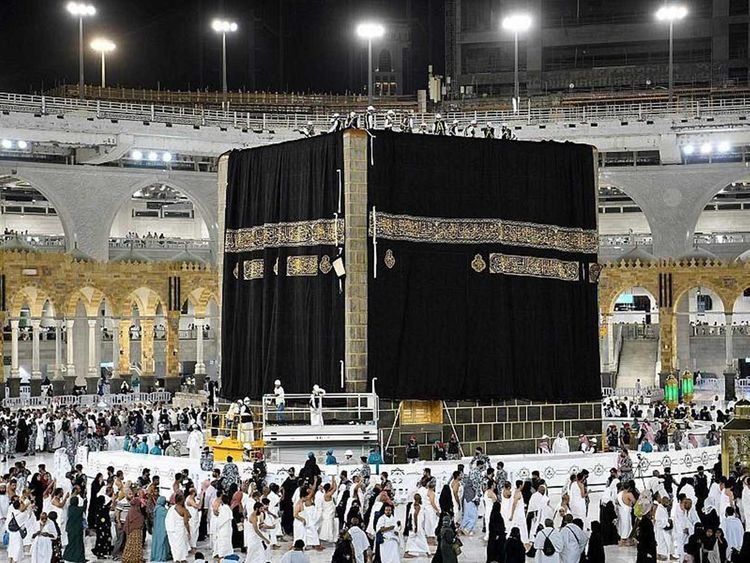The Ghilaf-e-Kaaba, known as the Kiswah, was replaced on the 1st of Muharram 1446, marking the beginning of the Islamic year.
The ceremony involved the removal of the old Kiswah and the installation of a new one. Traditionally held during the Hajj pilgrimage on the day of Arafah, this annual event has recently been rescheduled.
The Kiswah, a finely embroidered black silk cloth adorned with Quranic verses in gold thread, symbolizes the sanctity of the Kaaba.
The replacement process is meticulously planned, reflecting profound respect for Islam’s holiest site.
In recent years, the ceremony has been moved to the 1st of Muharram, the first day of the Islamic New Year, allowing it to be a separate and dignified occasion.
This change signifies a new beginning, aligning the Kiswah’s renewal with the start of the Islamic calendar.
The King Abdulaziz Complex for Kiswah Manufacturing in Makkah meticulously weaves, dyes, and embroiders the Kiswah using 670 kilograms of pure silk and 120 kilograms of gold and silver threads.
During the ceremony, the old Kiswah is respectfully replaced with the new one, a process that takes several hours and is attended by Saudi officials, religious leaders, and dignitaries from across the Muslim world.
Pieces of the old Kiswah are cut and distributed as gifts to dignitaries and religious organizations worldwide, continuing the tradition’s legacy.
The ceremony holds deep spiritual significance, symbolizing continuity and unwavering reverence for the Kaaba.
